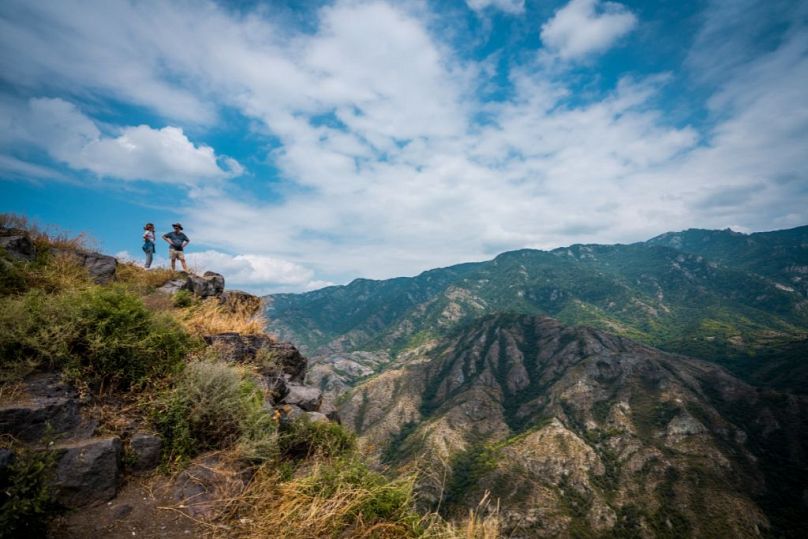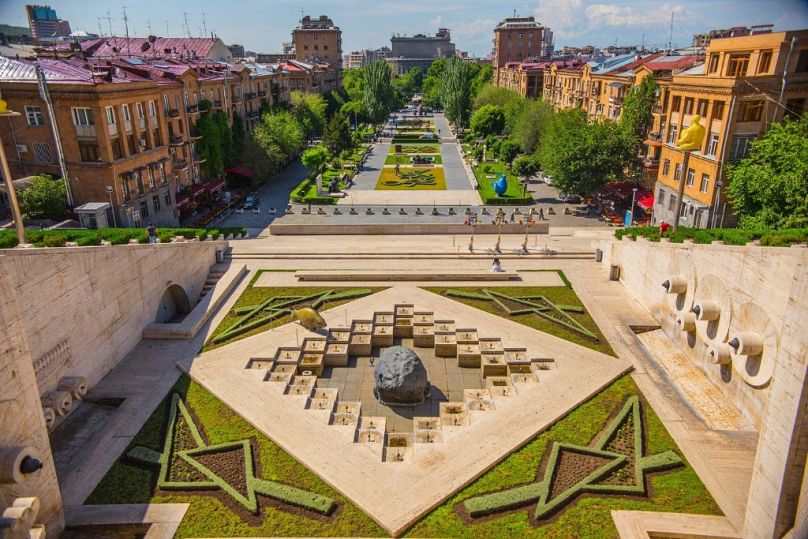Seeking worry-free travel? Head to culturally-rich Armenia, one of the world’s safest countries
Armenia has ranked within the top 10 safest destinations in the world, according to Numbeo’s safety index for 2024.
The Caucasus country came eighth out of 146 nations, rated according to survey responses addressing topics including violent crime, property crime and perceived safety.
Armenia’s historic capital, Yerevan, also performed well, landing 19th out of 333 cities.
It’s an attractive proposition for holidaymakers, but there are reasons other than peace of mind to visit Armenia. Ancient religious sites, delicious cuisine and a vibrant culture are abundant in Armenia and experiencing them all is easy, thanks to Armenia’s petite size (the landlocked country is less than 30,000 km2) .
Susanna Hakobyan, Deputy Head of the Tourism Committee for Armenia, recommends heading into Armenia’s rural regions to experience the best of the country. “It's better to get out of the capital city because in the regional areas we have this authentic feel,” she explains. “We have authentic food and culture and exploring these things will help visitors to dive deep into the real Armenian tradition, history and way of life.”
Here are just a few reasons to give Armenia a go in 2024.
Armenia’s local cuisine might surprise you
The country’s complicated history of kingdoms and conquerors has moulded Armenian cuisine over the years. But the rich soil has always yielded lentils, wheat, figs, and apricots.
Bread is big here, and the traditional ‘lavash’ has been deemed a significant cultural icon, so its creation is on the UNESCO Representative List of the Intangible Cultural Heritage of Humanity.
The thin flatbread can be made leavened or unleavened and is often infused with poppy seeds. It’s used prolifically for wraps, particularly around the various meat in ‘khorovats’, Armenian barbecue. It dries out fast, but is sometimes stacked dry and then softened with water for later use.
Other traditional foods include ‘dolma’: a vine or cabbage leaf wrapped around ground beef or lamb blended with rice, herbs and spices. The dish is celebrated annually in a festival called Uduli in the city of Armavir, which showcases a wide range of dolma alongside cooking classes and competitions.
Those lucky enough to attend a celebratory Armenian event such as a wedding or Christmas party might sample ‘ghapama’. A pumpkin stuffed with rice and dried fruits such as apricots, figs and raisins, this traditional dish is delivered to the table whole, then opened by slicing its sides.
Armenia’s ski slopes are underrated
Armenia isn't a destination many skiers likely consider when planning a snowy escape, but with peaks higher than the Alps and long sunny days in the winter, it’s set up well for piste fans.
New to the country’s ski scene is Myler Resort in the Aparan region of Armenia. Here, skiers, snowboarders, snowshoers and skaters can explore 100 marked pistes, a skiable vertical drop of 972 metres and three resort villages. Bars and eateries abound, providing guests with great apres options and thrilling skiing.
Another popular ski resort is Tsakhkadzor, the largest ski area in the country, which is just 40 minutes by car from Yerevan. Thirty kilometres of pistes await (60 per cent of which are black), the highest of which starts at 2,819 metres.
Skiing in Armenia is best enjoyed between December and March when the temperatures are suitably cold to ensure ideal slope conditions.
Immerse yourself in an Armenian festival
Festivals are a great way to get a sense of a country’s cultural traditions and history, and Armenia has a ton of them. There are year-round festivities from food and wine celebrations to hot air balloon and jazz festivals if you know where to look.
Yerevan Wine Days is one of the most popular. Drawing over 160,000 visitors and featuring 17,000 bottles of wine last year, this vibrant festival takes place in early June and is designed to celebrate Armenia’s more than 6,000-year history with the drink.
Saryan Street is the centre of the event, with wine producers from all over the country offering samples of their libations. A stage hosts continuous live music while street food vendors provide visitors with a taste of their delicious, local cuisine.
Yerevan Jazz Day, the communal water-splashing of the Vardavar Festival, the festival of honey and berries, and an international film festival are just some of the other many and varied events on offer throughout the year.
Armenia’s UNESCO Heritage Sites will wow
As the world’s first Christian nation, Armenia has serious historical significance; much of it is written across its landscapes. UNESCO deemed Three sites culturally significant, and the country has five more on its ‘tentative’ list.
All are well worth visiting, but one of the highlights is the Etchmiadzin Cathedral. Considered the mother of the Armenian Apostolic Church and claimed by some to be the oldest cathedral in the world, this beautiful building caught UNESCO’s eye as a prime example of the central-domed cross-hall style of the church, which defined the architecture in much of the region.
Closer to Armenia’s northern border, in the Lari Province, lie the Monasteries of Haghpat and Sanahin. Byzantine monasteries dating back to the 10th century, these mostly intact, historic monuments are a testament to the seamless blending of Armenian and Byzantine architecture. They are 16 kilometres apart, so visiting them via a guided tour is often easiest.
Another striking monastery (and Armenia’s third UNESCO site) is a collection of tombs and churches cut into the rock of the Upper Azat Valley. Just an hour east of Yerevan, the medieval buildings cut a striking pose against their steep cliff surroundings. On the way in, take a minute to toss a stone on the ledge in a cliff wall and make a wish. Locals believe if it stays on the ledge, your wish might just come true.














